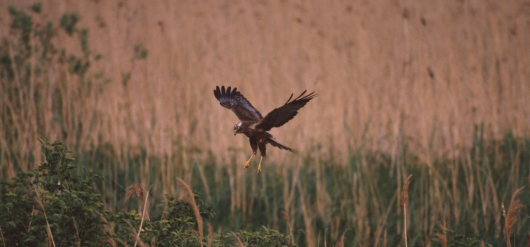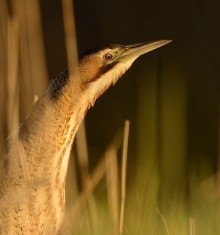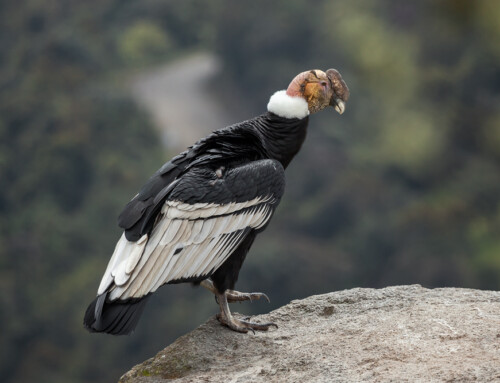The EU Birds Directive may be under threat, but evidence shows it delivers benefits for birds, even under climate change.
LINKED PAPER
Assessing the Performance of EU Nature Legislation in Protecting Target Bird Species in an Era of Climate Change. Sanderson, F.J., Pople, R.G., Ieronymidou, C., Burfield, I.J., Gregory, R.D., Willis, S.G., Howard, C., Stephens, P.A., Beresford, A.E. and Donald, P.F. 2015. Conservation Letters DOI: 10.1111/conl.12196
International biodiversity losses require international solutions, with legislation being increasingly seen as the most effective way to deliver such solutions. However, the effectiveness of policy instruments for conservation – whether they actually deliver wildlife on the ground, or birds in the bushes – is rarely quantified. Information on the performance of policy instruments is vital to ensure that limited funding for conservation is targeted to deliver its objectives both now, and under a changed climate (Lung et al. 2014).
The EU Birds Directive is an example of how international cooperation could lead to effective bird conservation. Adopted unanimously by all existing Member States in 1979, it is the EU’s oldest piece of nature legislation. It offers protection to all wild bird species, with an emphasis on species thought to require special conservation measures, known as Annex I species. It does this through a system of legal protection from persecution and through a network of protected sites, called Special Protection Areas.
Previous research showed that, prior to 2000, population trends of species protected under Annex I were more positive than those which were not protected, and that they were more positive after the Directive was implemented than before (Donald et al. 2007). The trends of these species were also more positive within the EU than outside it. However, much has changed since 2000. Rapid ecological change leading to declines in wildlife populations, including climate change, continues apace (Butchart et al. 2010).Thirteen new Member States in Central and Eastern Europe have joined the EU. The Birds Directive therefore has influence over a larger and more rapidly changing area than ever before, and it is even more important to establish that it still protects the wild bird populations it targets.

The political and economic landscape has also changed. The Birds and Habitats Directives, collectively known as the Nature Directives, are undergoing review. Part of the purpose of reviewing EU Directives is to assess whether the “burden” of regulation can be reduced, leading conservation organisations to be concerned that this heralds a potential weakening of EU nature legislation. However, protecting wildlife under the Nature Directives may not be an economic burden at all – quite the opposite. The Natura 2000 network of protected sites created under the Nature Directives are estimated to provide between 2 and 3 billion Euros per year, in ecosystem services and direct benefits like tourism, to the EU economy (European Commission 2013).
The Nature Directives also enjoy considerable support from the EU electorate. In a recent consultation, more than half a million people expressed their support for them – three times the previous highest response to an EU consultation and therefore the biggest show of public support for any EU Directive by a country mile.
However, all the public support in the world for the Nature Directives doesn’t deliver benefits for bird conservation unless those Directives actually do what they are designed to do. With colleagues at the RSPB Centre for Conservation Science, BirdLife International and Durham University, I revisited the 2007 work to see whether population trends of birds protected under Annex I were still more positive than those not protected, and this time we accounted for climate change (Sanderson et al 2015).
We looked at both long-term (1980-2012) and short-term (2001-2012) population trends for every breeding bird species in every EU country (except Croatia, which joined too recently for its bird populations to have been influenced by EU legislation). We considered the potential influence of breeding habitat, migratory strategy (whether a species wintered outside Europe) and measure of each species’ response to climate change as well as whether it was listed under Annex I of the Birds Directive. The measure of a species’ response to climate change showed whether its range, and by association its population, was expected to expand or contract over the given time period due to the influence of a changing climate.
The results were striking. The factor most consistently related to bird population trend was protection under Annex I – at least for species that wintered in Europe. Long-distance migrants, which spend much of their lives outside the EU, did not appear to benefit from protection. Annex I species’ trends were more positive than other species in both time periods in the original EU15, but for the new EU countries this was only the case from 2001 onwards. Given that this group of nations did not start joining the EU until 2004, this is exactly what we would expect if bird population trends were driven by such protection. The expected impacts of climate change were also detected in the long-term population trends between 1980 and 2012, yet the Birds Directive still had a positive impact, even for those species predicted to have suffered under climate change. This suggests that conservation measures implemented under the Birds Directive might help ameliorate the impact of climate change.
This is very positive news for international conservation legislation. Our results show it can make a real difference in improving the population trends of targeted species, even against the background of broad-scale threats such as climate change. The huge public support for the Birds Directive is therefore well-placed, and it would be a massive blow for bird conservation if it were to be weakened.
References and further reading
BirdLife International. Nature Alert (website) View
Butchart, S.H.M, Walpole, M., Collen, B., van Strien, A., Scharlemann, J.P.W et al. 2010. Global biodiversity: indicators of recent declines. Science 328: 1164-1168. View
Donald, P.F., Sanderson, F.J., Burfield, I.J., Bierman, S.M., Gregory, R.D. & Waliczky. 2007. International conservation policy delivers benefits for birds in Europe. Science, 317: 810-813. View
European Commission. 2013. The Economic Benefits of the Natura 2000 Network. Publications Office of the European Union, Luxembourg. DOI:10.2779/41957 View
European Commission. The Birds Directive (website) View
Lung, T., Meller, L., van Teeffelen, A.J.A., Thuiller, W. & Cabeza, M. 2014. Biodiversity funds and conservation needs in the EU under climate change. Conservation Letters 7: 390-400. View
Pellissier, V., Touroult, J., Julliard, R., Siblet, J.P. & Jiguet, F. 2013. Assessing the Natura 2000 network with a common breeding birds survey. Animal Conservation 16: 566-574. View
RSPB. Defend Nature (website) View
Sanderson, F.J., Pople, R.G., Ieronymidou, C., Burfield, I.J., Gregory, R.D., Willis, S.G., Howard, C., Stephens, P.A., Beresford, A.E. and Donald, P.F. 2015. Assessing the Performance of EU Nature Legislation in Protecting Target Bird Species in an Era of Climate Change. Conservation Letters DOI: 10.1111/conl.12196. View
Image credits
Featured image: Great Bittern © Ben Andrew (rspb-images.com).
If you want to write about your research in #theBOUblog, then please see here.





